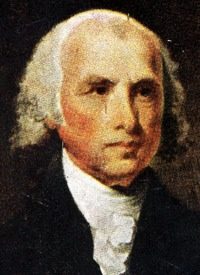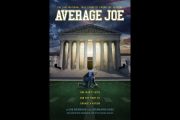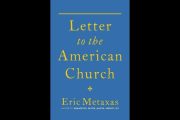
On your last visit to Washington, D.C., did you stand marvelling at the size and craftsmanship of the Lincoln Memorial? Did you pause and admire the sublime and simple neo-classical elegance of the Jefferson and Washington monuments? Then, did you wander over to the memorial dedicated to commemorating the unrivaled contributions of James Madison, the man known to history as the “Father of the Constitution?” No, you did not. Not because you don’t appreciate our fourth President’s lifelong dedication to limited government; rather, the Madison monument wasn’t on your list of things to see in the nation’s capital because no such monument exists.
It is this sort of historical relegation of James Madison to second string of the Founding Fathers that Andrew Burstein and Nancy Isenberg intend to correct in their new book, Madison and Jefferson. From the title onward, the authors insist that in terms of the value of their respective roles in the establishment of the American Republic, there is no reason to perpetuate the top billing always given to Thomas Jefferson in the dramatis personae of the dramatic events that culminated in the founding of the United States of America.
“Our title is not meant to be cute or ironic. It is not to degrade Jefferson as a force in politics — not one iota — but rather to suggest that it is time to reevaluate their relationship and their distinct individual contributions.”
To the credit of these two worthy historians, their book ably accomplishes the goal they set for themselves in the preface to the 808-page examination of the minds, motives, and machinations of the titanic titular statesmen.
It is no wonder that the duo undertaking this task have completed it so masterfully. Andrew Burstein is the Charles P. Manship Professor of History at Louisiana State University. He has written half a dozen books on the early Republic, including The Passions of Andrew Jackson and Jefferson’s Secrets.
The professional and literary accomplishments of Burstein’s co-author are no less impressive. Isenberg is also a professor of history at LSU. She has been awarded prizes for two of her previous offerings: Fallen Founder: The Life of Aaron Burr and Sex and Citizenship in Antebellum America.
The authors begin their defense of their title by establishing Madison as Jefferson’s equal in many signal ways: genealogy, land holding, erudition, and education. Both men were descendants of representatives of influential members of the middle tier of Piedmont aristocracy. Virginia was the largest (in square miles) of the 13 colonies, and its inhabitants were distinctive and fully conscious of their preeminence among their fellow colonials. As the authors explain:
The Virginians were substantially different in temperament from New England’s elite. The latter, it was said, were solemn, critical, and intense, trained for the bustle of business. Harsh seasons and a rocky coastline conditioned them. Along with good, plain common sense, the northern environment appeared to have produced a severity of manners and tautness of disposition that stood in contrast to southerners’ relative laxness and fondness for amusement.
That such distinct metals could be forged into such a powerful alloy is extraordinary. It was in the purifying furnace of resistance to British despotism that the trace metals of regionalism were cleansed from the base ores. Of course, in less than a century from the declaration of independence from England, this ardent nationalism would cool and sectionalism would divide the nation against itself.
Woven into the engaging narrative are the respective résumés of Madison and Jefferson. Consistent with their thesis, the authors take care to highlight much of the unsung, quotidian offerings brought by James Madison to the altar of liberty. Where Jefferson is renowned worldwide as the author of the Declaration of Independence, Madison’s skillful shepherding of the Bill of Rights through ratification is comparatively unheralded.
Of the many historical “shorthand” descriptions that the authors set about enlarging into a more accurate analysis is the notion that Madison was for most of their 50-year political collaboration merely Jefferson’s dutiful “lieutenant.” While there may have been times when Madison (nearly eight years younger than his companion) assumed a subordinate role, more often than historically recognized, he exercised a “veto power over Jefferson’s policy decisions.”
Madison, the book explains, was no modest mouthpiece for the proclaiming of Jeffersonian philosophy. Although often from “behind the scene,” he was being implored by Jefferson to emerge and employ his discerning mind and discriminating eye in the furtherance of the crucial concepts of republicanism, to which both men were steadfastly committed. As the authors so aptly sum up the interplay: “Jefferson rarely made a policy decision without soliciting Madison’s counsel and Madison would not pledge the United States to a position that he did not already know Jefferson approved.”
While these two charter members of the fraternity of Founding Fathers were undoubtedly friends, colleagues, and collaborators, Burstein and Isenberg are careful to draw distinct boundaries between the two. In fact, rather than present the relationship between Madison and Jefferson in the facile manner of a modern buddy movie, they diligently describe the collaboration as the result of the conscious efforts on both parts to separate whenever necessary and unite whenever possible. The secret to their success was not selflessness, but the unapologetic promotion of their own self-interests, which fortunately coincided with the greater interests of the new nation.
It is in their depiction of the development of the Kentucky and Virginia Resolutions and the underlying principle of nullification that the authors’ evenhandedness and scholarship achieves its finest form. As both men understood, the Constitution was meant to be a pragmatic expression of certain timeless principles of self-government: federalism, popular sovereignty, and mixed government. The national authority was not granted unlimited power, nor were the states stripped of their natural rights upon consenting to the formation of a central government. As Jefferson wrote in the opening line of the Kentucky Resolutions, the United States was “not united on the principle of unlimited submission to the general government.” The states imbued the national government with certain enumerated powers while retaining “the residuary mass of right to their own self-government.”
Madison echoed his countryman’s proclamation of the right relationship between the states and the federal government. Madison reasoned that if the government of the United States engaged in a “deliberate, palpable and dangerous exercise of other powers not granted by the said compact, the states who are parties thereto have the right, and are duty bound, to interpose for arresting the progress of the evil.”
That such a controversial episode in the history of our nation (especially in light of its recent resurgence in the wake of ObamaCare and other attacks on state sovereignty) was handled so deftly and so fairly is reason enough to purchase Madison and Jefferson. This demonstration of detached analysis is rare among the other books occupying the shelves in the History section of bookstores and libraries.
The academic integrity, analytical equanimity, and literary prowess of these two historians combine to make Madison and Jefferson a worthwhile addition to the reading list of every student of the Founding Era and proponent of constitutional republicanism as constructed by these two sons of the Old Dominion.
Likeness of James Madison: AP Images



